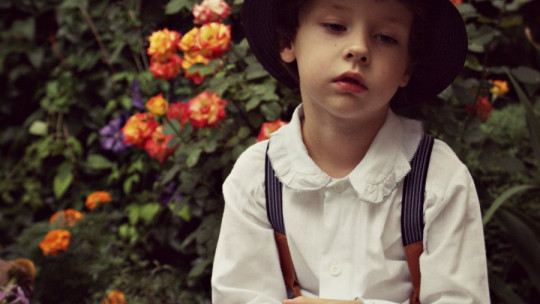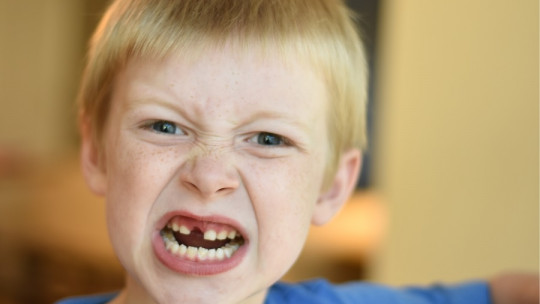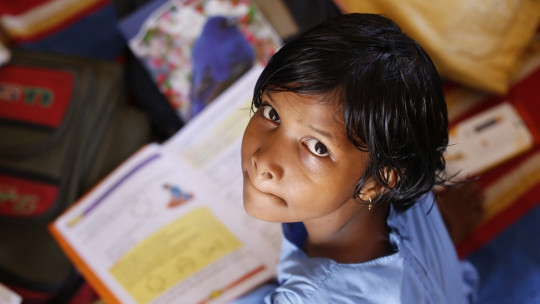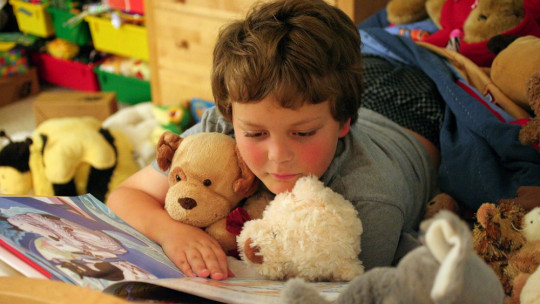Communication involves receiving and sending messages. When receiving them, it is necessary to understand them in order to be able to issue one in the form of a response, that is, to express ourselves.
In this sense, we can talk about two types of language: expressive, which is what we use as transmitters to transmit information to other people, and comprehensive, which refers to the ability to understand what others tell us and know it. analyze.
Next we are going to see what expressive language is and how it develops during early childhood, and what it means to have expression problems.
What is expressive language?
We talk about expressive language or the expressive aspect of language the ability of human beings to transmit information to another person That is saying things orally, in writing or through gestures and facial expressions. It can be understood as the “output” of language, in contrast to comprehensive language that implies “input” and interpretation.
This ability is already manifesting in the little one from birth. Throughout childhood development, oral expressive language begins when you begin to make sounds with your mouth. Although basic and seemingly meaningless, These babblings constitute the first example of the use of expression of the little ones It is their way, still unsophisticated and very interpretive, of communicating their needs, desires and feelings.
Just because he doesn’t talk yet doesn’t mean he doesn’t communicate, since communication begins at birth, including reflective crying, looking away when he doesn’t want more breast milk, or throwing something when he doesn’t like it.
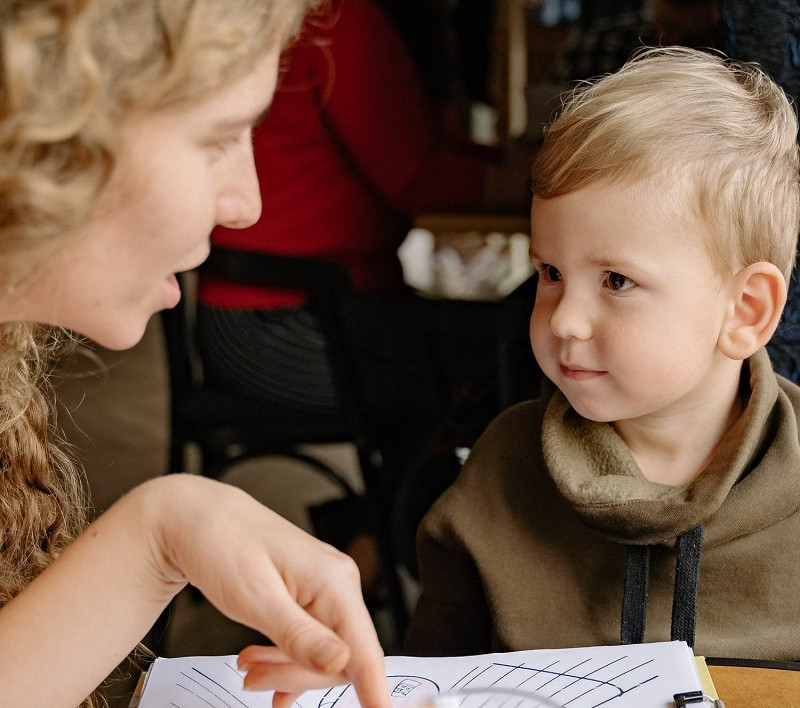
The development of expressive language in childhood
Expressive language does not appear suddenly. Throughout the development of the infant, it goes through several phases in which Their expressive capacity becomes more sophisticated to end up speaking in a similar way to how an adult does around 3-4 years old
1. First 9 months
During the first 9 months Babies experiment with sounds and other forms of communication to express their curiosity and interest in their environment in addition to trying to have influence over him.
In this vital period of the child, the following behaviors can be seen:
Useful interaction strategies from their caregivers:
2. From 7 to 18 months
Babies’ language progresses, going from babbling to vocal expressions and first words. The little ones reduce their babbling while their vocabulary begins to increase exponentially His first words tend to be two-syllable expressions, often diminutives of everyday objects, such as saying “bibi” for “baby bottle.”
During this period you can see the following behaviors in the child:
Some useful interaction strategies For caregivers at this stage they are:
- Recognize and respond to the child’s attempts to communicate.
- Expand what the child is saying: Water? Do you want to drink more water?
- Show appreciation when your child tries to use new words.
- Talk and read in front of the little one.
- Describe what is happening throughout the day: “let’s sit down and eat.”
3. From 16 months to 24 months
Around the age of two, children continue to experiment with language and expand their vocabulary. Also It is at these ages that boys and girls begin to say two-word sentences to communicate meanings such as “daddy went” or “I juice”.
Among the behaviors that we can observe in this period we have:
- Use more words than gestures when speaking.
- Repeats words he hears.
- Telegraphic speech: “baby dream”, “bad dad”, “broken game”.
Some interaction strategies for caregivers are:
- Continue talking to your child about everyday topics.
- Encourage the child to talk and expand on what he is saying.
- Recognize and expand what the child expresses: “yes, I see that dad is gone.”
3. From 21 months to 36 months
The little ones are already able to communicate about current topics and begin to combine some words into short sentences to express more clearly what their needs and desires are, especially as they approach 3 years of age. In this period, she begins to use verbal modes and tenses, although still in simple phrases. There continues to be a noticeable increase in vocabulary, combined with the use of articles, pronouns and adverbs.
Some behaviors that we can observe at this stage are:
- Says three-word phrases: “I want to eat apple.”
- Use of pronouns and prepositions: “He took the ball away from me,” “in the chair.”
- Makes conjugation errors of irregular verbs (“done”, “dició”, “tene”). This is indicative that you understand complex rules of grammar.
- Use more and more adjectives: “pink doll.”
Some interaction recommendations for adult caregivers:
Provide a model of correct speech, but without correcting the child when he or she is speaking.
Use simple phrases when talking to your child.
Let children play and experiment with language by singing or rhyming.
Related article: “Developmental Psychology: main theories and authors”
Expressive language problems
Although this is not always the case, children who have difficulties with expressive language usually also have difficulties with comprehensive language. Many of the symptoms associated with disorders of expression and comprehension are similar, such as attention deficits In the particular case of expressive problems we have some symptoms such as the use of jargon that is very childish for their age (for example, “bibi”, “aga”), use of sentences with few words and simple verbs, sentences with an order of words incorrect, in addition to a severe difficulty in mastering reading, writing and written expression.
Expressive language problems limit people’s ability to communicate their thoughts and ideas. If there is not a receptive or comprehensive language problem but rather an expressive type problem, the patient understands what is said to him, but struggles to verbalize, write, and physically express his thoughts and ideas.
Among other problems, Children with an expressive language disorder may manifest the following problems
- Difficulty putting words together when speaking.
- Difficulty finding the right words when speaking.
- Have vocabulary below the level of their peers.
- Using times incorrectly.
In these little ones we can also observe behaviors such as the following:
- Answer direct questions with one- or two-word answers.
- They rarely elaborate on an idea or provide a detailed description of their experiences.
- Their choice of vocabulary is limited and unsophisticated.
- Its written expression is tedious and results in a very poorly developed text.
- Your body language does not correspond to what you feel in a given situation.
Boys and girls with expression problems can be helped if various strategies are applied to them. In a classroom context, it may be useful to promote the active participation of this type of students in class discussions and in pencil and paper activities In addition, visual aids can be included to increase the use of vocabulary, such as drawing an image or gesture and the written word underneath. Visual graphic organizers are also a useful tool in developing expressive language production.
At home, various tools can also be used to help the little ones. It is advisable for parents to use who, what, when, why, where and how questions when talking to their child, and to avoid yes and no questions These questions can be used as sentence expanders to improve written expression.
Each child is unique and may show different signs of language development problems. These symptoms and signs should be evaluated to find out whether or not there is an expressive language problem. It is best to go to a licensed professional who can truly determine whether or not your child has these problems. Among the professionals who can treat this learning problem we find speech and language therapists such as speech therapists, child psychologists and reinforcement teachers.
Given the limitations of not being able to express oneself well, it is very important that if we suspect that our child or student may have this type of problem, they are helped, a diagnostic protocol is initiated and reinforced to the extent possible and necessary As always, early detection and intervention is the best prevention strategy. The sooner you act, the less serious the learning problems will be and the easier it will be to improve your situation.



